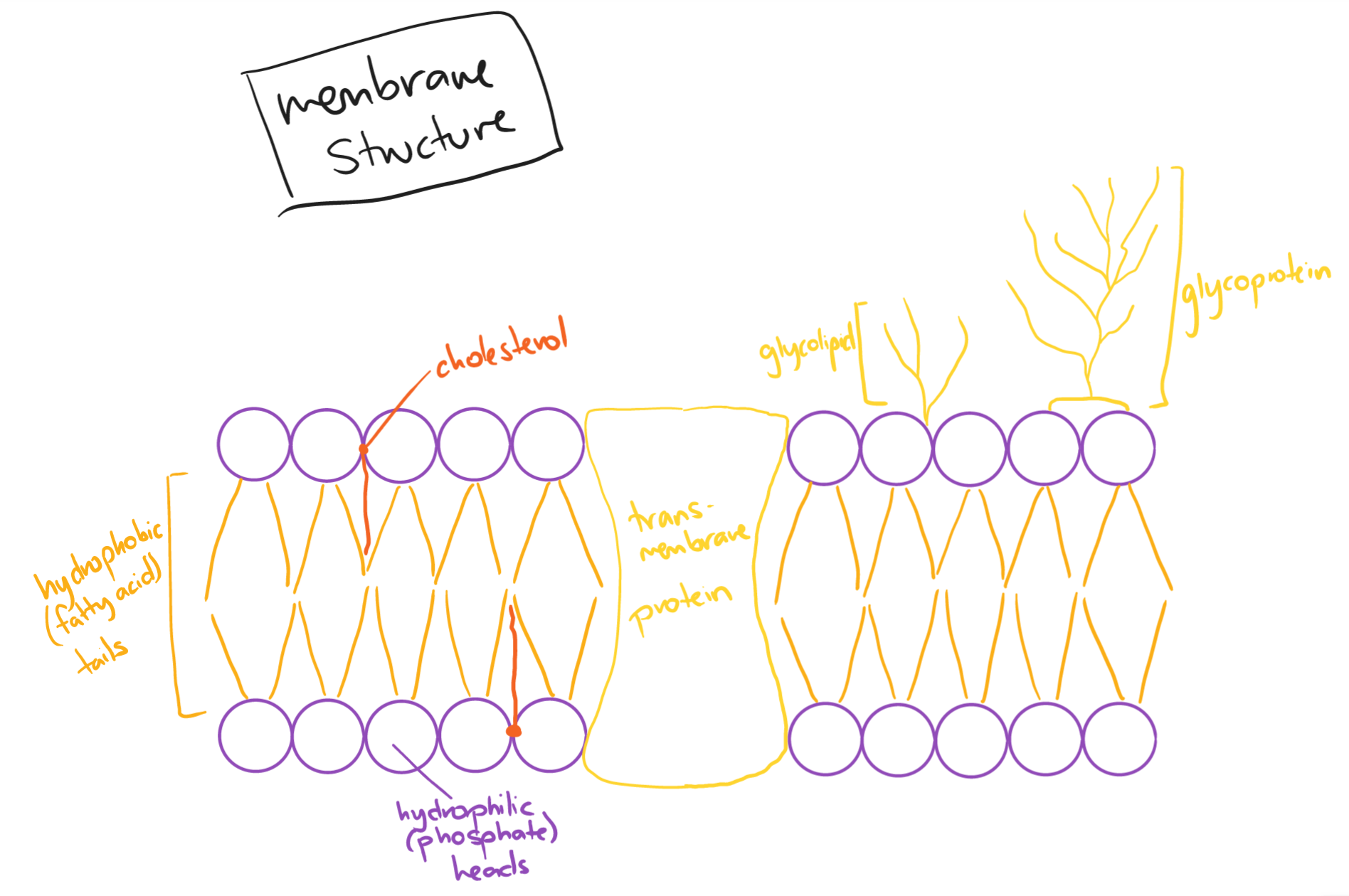CIE AS Biology 4.1: Structure of Membranes
The cell membrane separates the internal cell environment from the external environment. Materials needed for cell growth are brought into a cell while toxic substances are kept out of the cell. The exchange of materials is strictly controlled by the membrane.
- the membrane is partially permeable
- the exchange of materials occurs by diffusion, osmosis, and active transport
The cell surface membrane and tonoplast are two of the many membranes in a cell. Membranes are important for compartmentalization in a cell.
Components of the Membrane
The cell surface membrane contains phospholipids that form a bilayer, proteins such as glycolipids and glycoproteins, and cholesterol.
Phospholipid: contains a hydrophilic phosphate head and two hydrophobic fatty acid tails
Proteins:
- intrinsic membrane proteins: contained in the phospholipid bilayer; go right through the layer (transmembrane)
- transmembrane: provide a hydrophilic pathway to allow ions and polar molecules to pass through the membrane (carrier and channel proteins)
- integral membrane proteins: permanently attached to the membrane
- extrinsic membrane proteins: found on one side of the membrane, often on the surface
- act as receptors/antigens
- peripheral membrane proteins: temporarily attached to the membrane
- glycolipids/glycoproteins: containing a short carbohydrate chain
- they are responsible for cell stability, cell signalling, endocytosis, and cell-to-cell recognition
Cholesterol: a steroid that maintains the flexibility and permeability of the cell membrane
 The fluid mosaic model of the membrane was first outlined in 1972 by S.J Singer and Garth L. Nicholson.
The fluid mosaic model of the membrane was first outlined in 1972 by S.J Singer and Garth L. Nicholson.
- The fluid mosaic model describes cell membranes as ‘fluid‘ due to:
- the movement of the phospholipids and proteins via diffusion
- the movement of the phospholipids within their own layers
- the different types of proteins are interspersed and move within the layer, though some may be fixed
- The fluid mosaic model describes cell membranes as a ‘mosaic‘ as their scattered pattern produced by the proteins within the bilayer forms a ‘mosaic-like‘ image when viewed from above
The fluid mosaic model is used to explain the passive and active movement between cells and their surroundings, cell-to-cell interactions, and cell signalling.